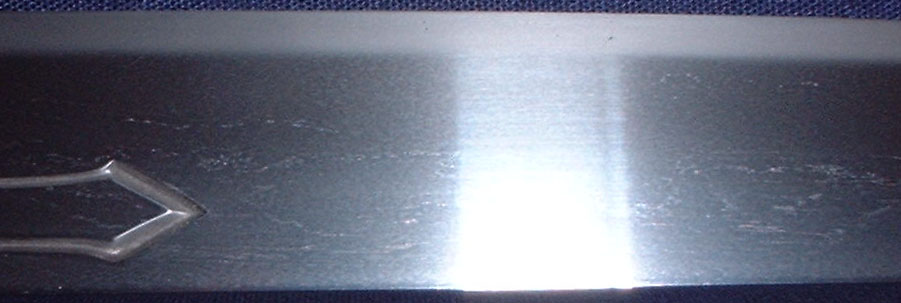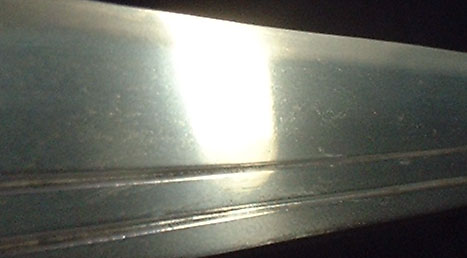Nashiji-hada is most popular in the Awataguchi school in Kyoto 13th century. By careful study, the steel of it has rather large layer pattern, but fine particles fill the surface. It looks like a very small wood grain made of twinkle particles.
A frontal view of an Awataguchi Kuniyoshi tanto. It is difficult to take a picture of jinie activity.

Awataguchi's steel colour is bright and clear. Of course a snow white hamon and utsuri appear.

Nashiji-hada may come from proper material and hardening work. And the appeaprance of it is brought up by good polishing.
To recognize the difference between "layer pattern (hada)" and "grain of particles (chikei)" is very important to study steel. But most of ordinary blades have a steel that has only an appearance of the layer pattern. Opposite of nashiji-hada is "mujigane". It has no effects by particles and it looks like a mirror surface.
Another sample of Nashiji-hada
=> Broken tip of Sueyuki